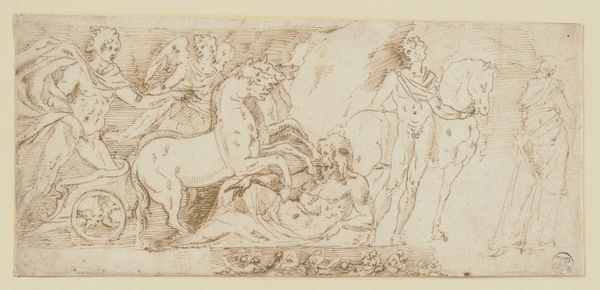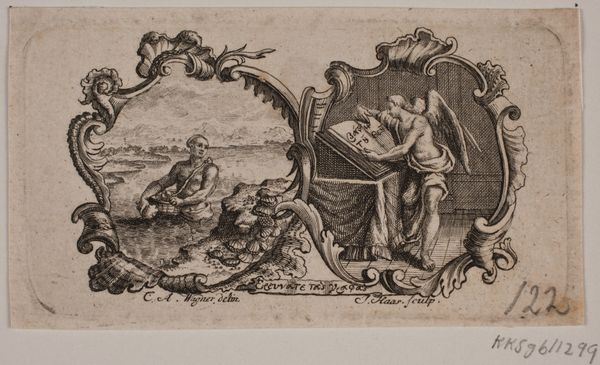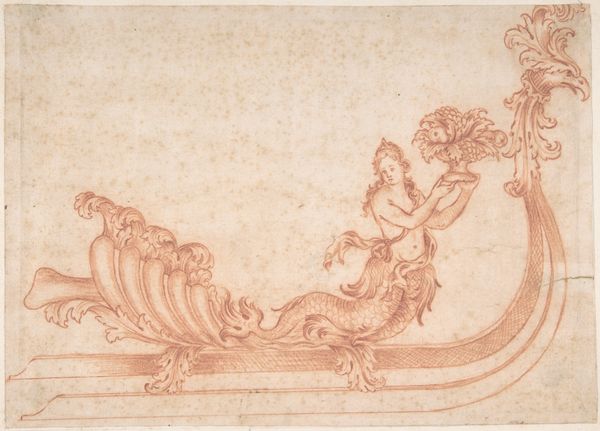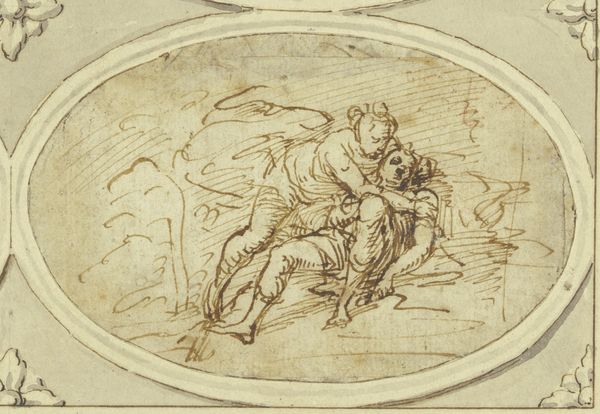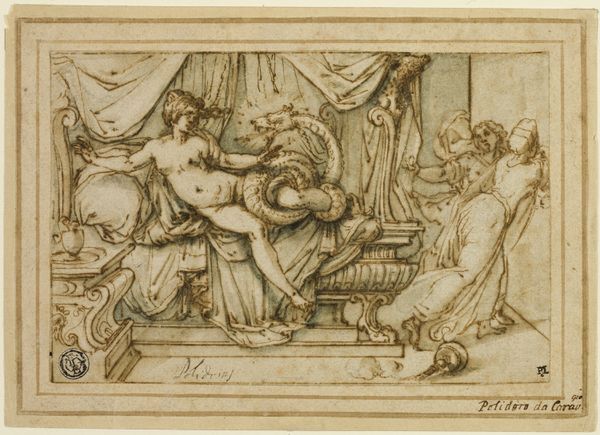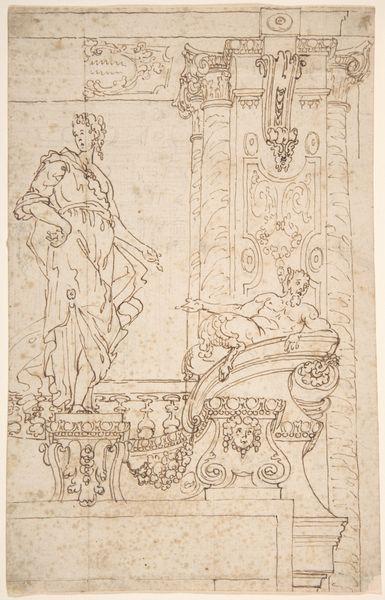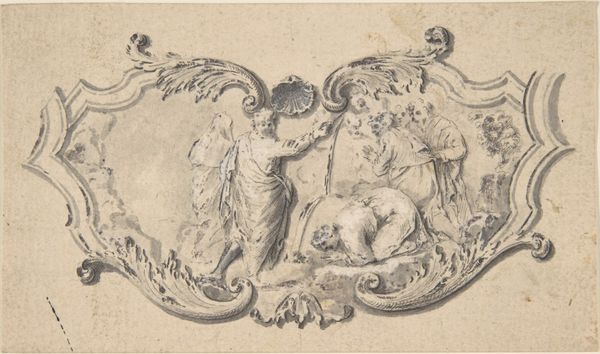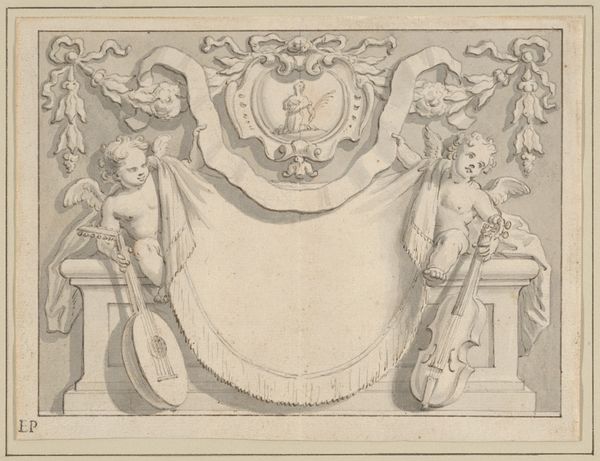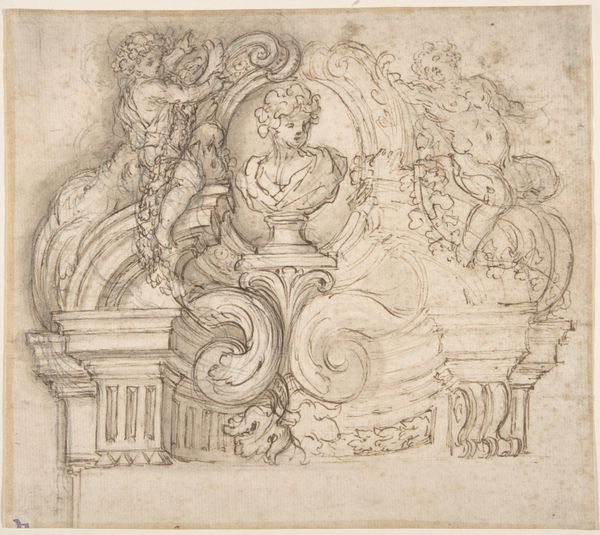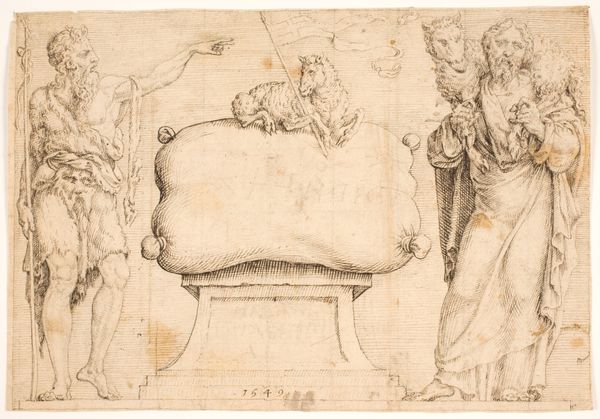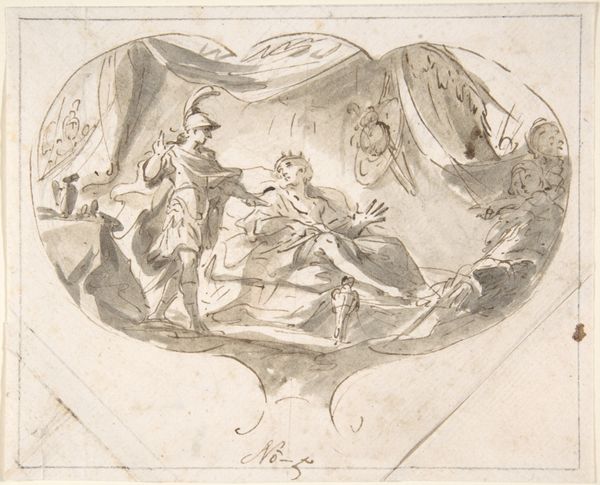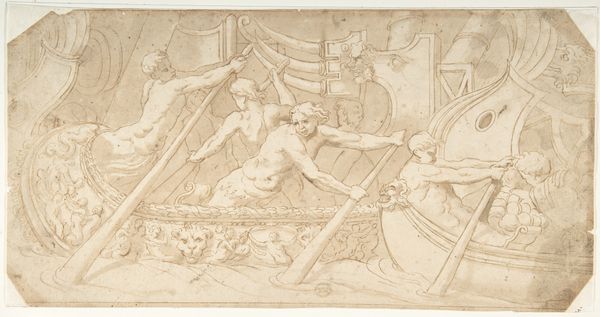
drawing, print
#
drawing
#
baroque
# print
#
figuration
#
history-painting
Dimensions: 6 7/8 x 8 1/2 in. (17.5 x 21.6 cm)
Copyright: Public Domain
Curator: Looking at this work from the Metropolitan Museum, dating back to sometime between 1700 and 1800, we see a baroque design for a pediment. It's an anonymous work, executed as a drawing or possibly a print. Editor: Immediately, I'm struck by the warmth of the sanguine chalk and the energetic linework, despite its intended purpose being architectural and somewhat rigid. It’s really quite lively! Curator: Indeed, those cherubic figures supporting what appears to be a family crest almost burst off the page. The imagery certainly leans heavily on the Baroque tradition: overflowing with classical allegories meant to evoke certain established aristocratic virtues. Editor: Thinking about the process here… each stroke carefully builds the form. You see the labor involved, almost a conversation between the artist’s hand, the limitations of the material, and, of course, the requirements of the patron. It tells a story about production, not just divine allegory! The texture of the paper, perhaps even its origins, speaks of that economic and social context, influencing the piece and ultimately dictating its survival. Curator: Yes, the choice of certain allegorical figures could represent that patron’s desire for stability through perceived cultural dominance, a common practice in post-Reformation Europe. The Baroque aesthetic served the role of amplifying power through displays of wealth and faith, and by drawing from established traditions. Editor: You're spot on. Looking at the physical act of creating the pediment itself… it was intended for real-world fabrication from heavy materials, and probably involved multiple skilled trades. The finished form probably had an even bigger social impact! Curator: I find it compelling how these symbols still resonate. They tap into an understanding of history and the enduring search for meaning and power, irrespective of artistic interpretation. Editor: For me, it is amazing how this drawing is evidence of the interconnected network of production from artist and patron all the way through those who would ultimately view the architecture with this pediment atop it.
Comments
No comments
Be the first to comment and join the conversation on the ultimate creative platform.

